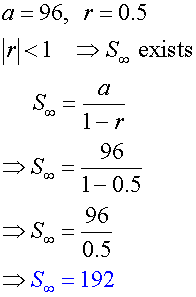

0.(9) = 1 is also a true claim, and this has no bearing on 0.(9) = 0.(9) or 1 = 1. No, I merely made two claims, I never made an argument concerning the two claims themselves, because I never made inferences from those two premises. You are deliberately putting words in my mouth now, which is exactly what a person without validatguments or a decent understanding of the topic would do as a scapegoat. I never claimed that 0.(9) = 1 because 8.(9) = 9. “I hope you understand that your argument is circular: 0.999… = 1 because 8.999… = 9.” A basic idea you have failed to notice is that. It must be, since infinite sums are by definition limits. It is merely, by definition, the limit of the sequence. “1 is the LIMIT of the sequence 0.9, 0.99, … it is not the sequence.”Ĭorrect, and no one claimed it is the sequence. Then you obviously fail to understand either what limits are or what numbers are. It is not a sequence.Īctually, every number is the limit of itself. Just like “0.999…” is a sequence or a sum.”Ġ.(9) is a sum, not a sequence. The other one is an element of both a vector space and a scalar field. One is an element of a vector space which is not a field. “The actual sequence is not equal to zero.” And real numbers are limits of Cauchy sequences. If you don’t believe this about 0.9999… or would like to see a discussion of these issues, you can check this out.Ĭorrect. In particular, I am assuming that you already believe that it is a real number (or, if you like, that it has a few properties that we generally assume that numbers have). Update: As one commenter pointed out, I am assuming in this article certain things about 0.9999…. But since there aren’t any numbers “between” 1 and all the real numbers less than 1, that means that 0.9999… can’t help but being exactly 1. This is intuitive given the infinitely repeating 9’s. What we see here is that 0.9999… is closer to 1 than any real number (since we showed that 1-0.9999… must be smaller than every positive number). At the same time though, it must also be at least as big as zero, since 0.9999… is clearly not bigger than 1. That implies that 1-0.9999… must be smaller than every positive number. Taking 1 and subtracting all parts of the equation from it gives:īut we can make the left hand side into as small a positive number as we like by making n sufficiently large. Now, our number is bigger than for every n, since our number has an infinite number of 9’s, whereas always has a finite number, so we can write:

Another approach, that makes it a bit clearer what is going on, is to consider limits.


 0 kommentar(er)
0 kommentar(er)
